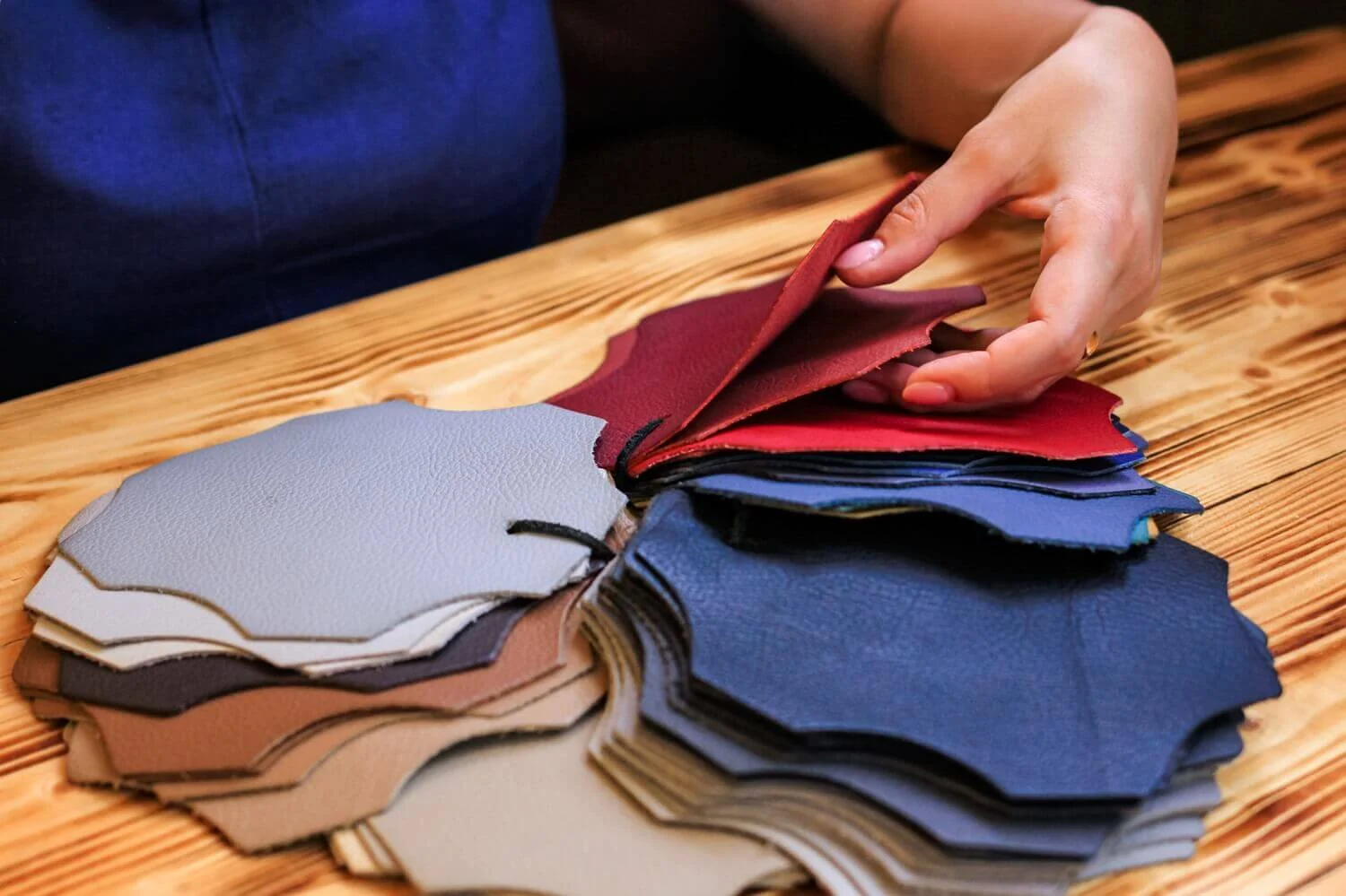The leather industry has traditionally been associated with high environmental costs, but a new wave of innovation is transforming this perception. Sustainable leather, derived from food industry by-products, is becoming a renewable resource that can reshape how we think about materials.
In this article, we will walk you through the transformation process, environmental benefits, and the application of sustainable leather.
The Process of Transforming Food Industry By-Products into Leather
Using food industry by-products to produce leather involves several steps that ensure both quality and sustainability. These steps include sourcing, tanning, and finishing, each designed to maximise efficiency and minimise waste.
1. Sourcing Raw Materials
The journey begins with sourcing raw materials from the food industry. By-products such as hides and skins, which would otherwise be discarded, are collected. This not only provides a use for these materials but also reduces the waste burden on the environment. Efficient collection and transportation methods ensure that these materials reach the processing facilities in optimal condition.
2. Tanning Methods
Tanning is the process that converts raw hides into durable and flexible leather. Traditional tanning methods often rely on toxic chemicals; however, sustainable leather production favours eco-friendly alternatives.
Vegetable tanning, which uses natural tannins from plants, and chrome-free tanning are among the methods that significantly reduce environmental impact. These techniques not only produce high-quality leather but also minimise harmful emissions and water pollution.
3. Finishing Touches
The finishing stage is where leather gets its final texture, colour, and protective coating. In sustainable leather production, water-based dyes and finishes replace solvent-based products, further reducing environmental harm. The use of renewable energy sources in the finishing process also contributes to a lower carbon footprint.
Environmental Benefits of Sustainable Leather
Sustainable leather production offers numerous environmental benefits, making it a preferable alternative to traditional methods. These advantages span waste reduction, conservation of natural resources, and lower greenhouse gas emissions.
1. Waste Reduction
By utilising by-products from the food industry, sustainable leather production significantly reduces waste. This not only alleviates the pressure on landfills but also provides an economic benefit by converting waste into a valuable product. The closed-loop nature of this process ensures that every part of the raw material is used, leaving minimal waste.
2. Conservation of Natural Resources
Sustainable leather production conserves natural resources in several ways. First, it reduces the need for virgin materials by repurposing by-products. Second, eco-friendly tanning methods consume less water and energy compared to traditional processes. Finally, the use of renewable energy sources throughout the production chain further diminishes the overall resource consumption.
3. Lower Greenhouse Gas Emissions
The shift to sustainable leather also means a significant reduction in greenhouse gas emissions. Traditional leather production is notorious for its high carbon footprint, largely due to the energy-intensive tanning process and the decomposition of unused hides in landfills. Sustainable methods, with their emphasis on renewable resources and efficient processes, help to cut these emissions substantially.
Applications and Advantages of Sustainable Leather
Sustainable leather is versatile, with applications ranging from automotive to fashion industries. Its advantages over traditional leather make it an appealing choice for conscious consumers and businesses alike.
1. Automotive Industry
In the automotive industry, sustainable leather is gaining traction for use in leather seats and interiors. Car manufacturers are increasingly looking to reduce their environmental impact, and sustainable leather provides a way to do so without compromising on quality or comfort. The use of sustainable leather in leather seats not only enhances the vehicle’s appeal but also matches the growing demand for eco-friendly products in the automotive market.
2. Furniture and Interior Design
Sustainable leather is also making its mark in the furniture and interior design sectors. From sofas to decorative items, sustainable leather offers a stylish and durable option for consumers. Its environmental benefits and high quality make it a preferred choice for those looking to furnish their homes or offices sustainably.
3. Fashion Industry
The fashion industry is one of the largest consumers of leather. Sustainable leather offers designers a material that is both high-quality and environmentally friendly. Brands adopting sustainable leather demonstrate a commitment to reducing their environmental impact, which resonates well with today’s eco-conscious consumers. Additionally, sustainable leather maintains the luxurious feel and durability that high-end fashion demands.
Final Thoughts
Sustainable leather, derived from food industry by-products, is a significant step towards a more environmentally friendly and resource-efficient future. By transforming what was once waste into a valuable renewable resource, sustainable leather production not only addresses critical environmental issues but also offers high-quality materials for various industries.
The future of sustainable leather looks promising. As technology advances and awareness grows, sustainable leather is set to offer a viable and attractive alternative to traditional leather products.




